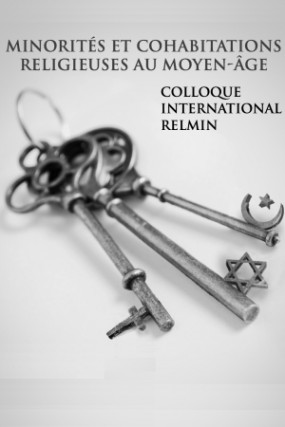Actualités

Conférence de Talya Fishman et Jonathan Brown : "Du Sacré au Légal : Textes Normatifs et Communautés Textuelles" - Colloque final du projet européen RELMIN (ERC)
Conférence organisée en partenariat avec l’IEA de Nantes et la Maison des Sciences de l’Homme Ange Guépin
A l’occasion de son colloque final, le projet de recherche européen RELMIN organise du 20 au 22 octobre prochains de nombreuses discussions et tables-rondes sur les minorités religieuses au Moyen-Age (voir le programme complet de l’évènement).
L’une de ces conférences, organisée en partenariat avec l’Institut d’Etudes Avancées de Nantes, se tiendra à l’amphithéâtre Simone Weil le 21 octobre prochain et traitera de la dimension normative des textes religieux. La conférence comportera deux interventions, l’une par Talya Fishman de l’Université de Pennsylvanie et l’autre par Jonathan Brown, de l’Université Georgetown.
Sacrality and Legal Normativity: Varieties of Jewish Textual Authority in Historical Perspective
par Talya Fishman, Département d’Etudes Religieuses, Université de Pennsylvanie
Résumé de la présentation (en anglais) :
Though considered the foundational text of Judaism, and a source of Jewish law, the Torah has played more of a symbolic, than an actual, role as the guide to normative Jewish life. The text which has served as the Jewish legal reference work, par excellence, is the Babylonian Talmud. After explaining this shift, my remarks will revise the inherited historiographic narrative which presents the Babylonian Talmud as a text which served as the preeminent source of Jewish legal authority from the turn of the sixth century, the time of its last named tradents. Those familiar with this corpus know that its extreme “multivocality” -- its dogged refusal to resolve legal disputes -- is among the features that made the Babylonian Talmud remarkably ill-suited to the cultural task that it ultimately came to perform. Drawing on literary and historical evidence, I will argue that several centuries elapsed before the Babylonian Talmud was a fully functional guide to applied Jewish law, and will demonstrate that the processes of “readying” the Talmud for this role were different in the medieval Jewish subcultures of Sefarad and Ashkenaz, whose populations lived in the lands of Islam and Christendom, respectively. Reconstruction of these processes— both conscious and unconscious—reveals that the pathways to legal normativity were related to the social, institutional and compositional practices of the broader milieux in which these Jewish subcultures developed.
Islam’s Scripture, Legal Interpretation and Social Praxis regarding Polygamy and Violence against Women
par Jonathan Brown, ’Prince Alwaleed Bin Talal’ Center for Muslim-Christian Understanding, Université Georgetown
Résumé de la présentation (en anglais) :
This paper demonstrates how the hermeneutics applied to the Quran and precedent of the Prophet resulted in substantive law (fiqh) greatly removed from the evident meaning of scripture. It goes on to explore how the application of law in court praxis and pre-modern Islamicate societies offered two other layers of scriptural interpretation, constructing new relationships to fiqh, the Quran and prophetic teachings.
> Dépliant en français de la conférence de Talya Fishman et Jonathan Brown
> Dépliant en anglais de la conférence de Talya Fishman et Jonathan Brown

